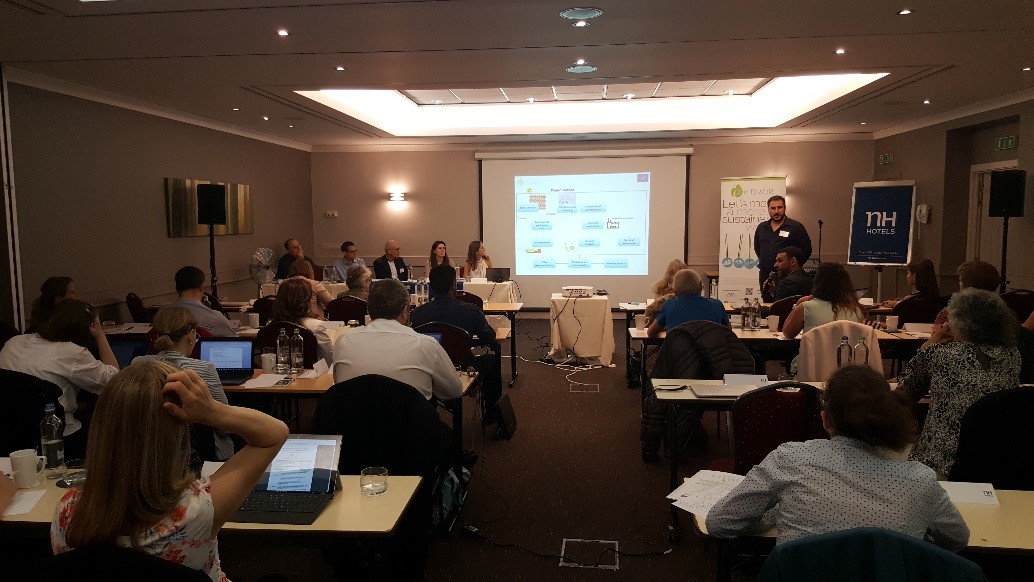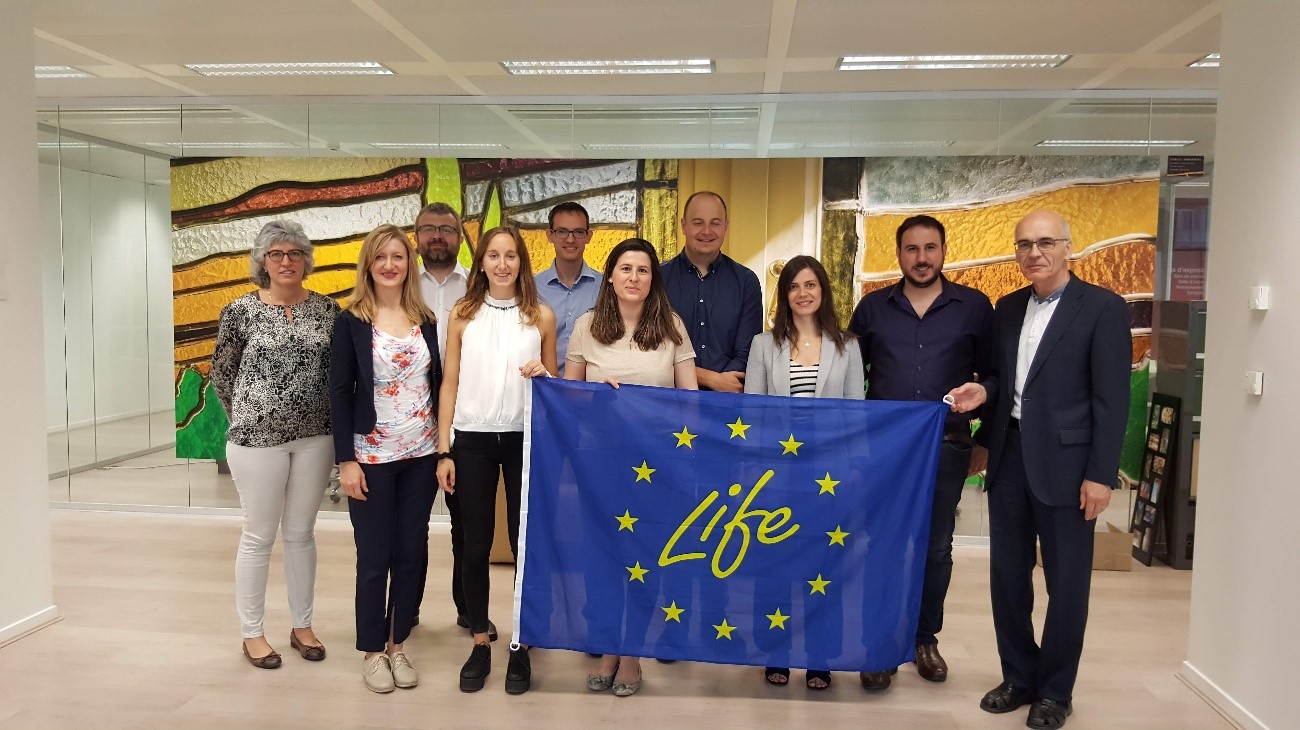MIDWOR-LIFE gathers international stakeholders for its final event where key results and discussions were presented
On June 5th, the final event of MIDWOR-LIFE gathered 36 stakeholders in the field of substitution of per- and poly-fluorinated substances in the textile industry, in Brussels with broad high profile representation including the European Commission, textile industry representatives, chemical producers and research centers across Europe.
The event started with the welcome from AEI TEXTILS and a round call presentation. It was followed by the overview of the regulatory landscape on the field of short chain fluorocarbons by Valentina Bertato from the European Commission. On her presentation, she pointed out the directions the different member states’ authorities are taking towards the restriction of short chain fluorocarbons in the near future. Dunja Drmac, sustainability officer in EURATEX, followed presenting the industry point of view on substitution highlighting the need to inform the industry on the different alternatives to avoid regrettable substitution and to allow flexibility by the regulatory bodies in case no alternatives are available like with short chain fluorocarbons as textile finishing for oil and water repellency.

After the introductory presentations, the MIDWOR-LIFE team presented the project key results in the technical performance, risk assessment and environmental impact through the life cycle assessment of the different DWORs’ alternatives. One of the major technical conclusions from MIDWOR-LIFE project is that alternative fluorine-free products are able to achieve comparable water repellency compared to short and long chain fluorocarbons. However, only fluorinated compounds are able to provide oil repellency. The risk assessment for occupational health showed that long chain fluorocarbons present a moderate risk to workers, while short chain ones have a mitigated impact to workers’ safety and its exposure is highly dependent on the industrial settings. Lastly, the environmental impact, assessed through LCA methodology, showed a significantly reduced environmental footprint by fluorine-free products when compared to conventional fluorinated technology.
After the presentations, a discussion followed among the project team and the different stakeholders. A lot of interest arose around the possible derogation of some applications within the new restriction proposal which is currently undergoing leaded by ECHA and national authorities. The discussion focused on the need to define critical applications where oil repellency is a must in order to include them into the derogation within the upcoming restriction of short chain fluorocarbons.
E. CIMA, a Spanish textile company member of AEI TEXTILS’ cluster, presented its experience as participant in the industrial demonstration actions and the impact MIDWOR-LIFE experience generated to the company.

Lastly, the event followed by the presentation of projects starting across Europe with high interest for the textile sector and the different stakeholders present in the event. Namely, POPFREE and SUPFES projects led by SWEREA, Sweden, and focusing also in fluorocarbon substitution and alternatives were presented by Christina Jönsson; LIFE-FLAREX project with focus on flame retardants in textile applications was presented by Paula Felix (LEITAT, Spain) and Ine De Vilder (CENTEXBEL, Belgium); LIFE AskREACH which aims to develop an app for assessing the presence of substance of very high concern in different products was presented by Ioannis Dosis (Federal Environmental Agency, Germany) and lastly Fit for REACH which looks at case studies on chemical management while implementing REACH was presented by Jana Simanovska (Ecodesign Competence Centre, Latvia).
The MIDWOR-LIFE team did also hold the consortium meeting during June 4th and June 5th to review the progress of the project within the facilities of the Delegation of the Catalan Government in the EU, also in Brussels. The team reviewed the latest updates of each individual action and planned activities for the coming last months of the project life cycle. The presentation of the industrial demonstration test results was a major outcome of the project completed during the last semester, the full report is publically available on the project website. Besides, the preliminary results of the other key actions were also shared among the partners and some major outcomes are already available on the project website: the risk assessment and the life cycle assessment draft reports.
